What is the hyoid?
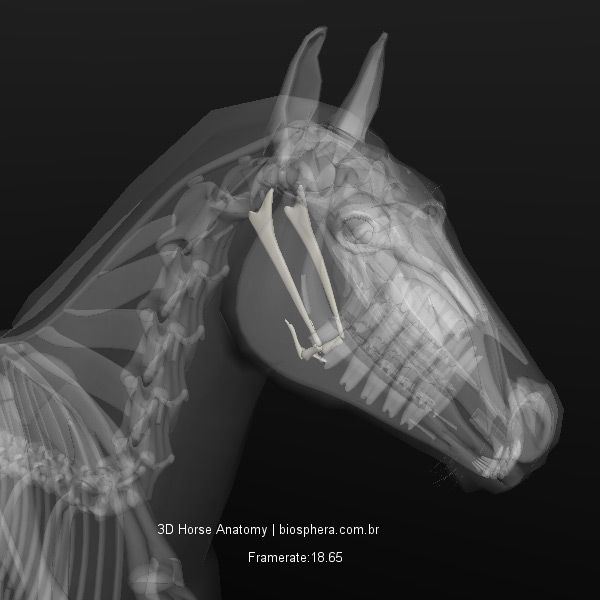
The hyoid apparatus is a main component in the “Ring of Muscles”, a chain of muscles that creates a direct connection from the mouth to the hindlimbs contributing to the body’s posture and motion. The hyoid is involved in all the movements of the tongue and larynx, aka area above the trachea known to protect you from choking by closing off the opening to the trachea (it is made for air, not things), it is also responsible for coughing, which is apart of the choking mechanism mentioned above; however, it also has a close relationship with balance. It’s located at the base of the skull in between the horses cheeks, shaped like a “Y”, made of several bony rods, the largest pair is the stylohyoid that articulates at the proximal end of the bone to the skull via the temporohyoid joint. Paired epihyoid bones articulate to the distal end of the stylohyoid bones, then paired ceratohyoid & thyrohyoid bones that come together to connect onto the central basihyoid bone in which the tongue is situated on. The hyoid bones are solemely held in place by ligaments and are the only bones in the body that do not connect to other bones. The bones are very thin and fragile, even though the hyoid is protected within the mouth it is still susceptible to fracture or breaking.
Muscles of the hyoid
Several muscles attach to the hyoid; every muscle in the horses body eventually connects to the hyoid and the contraction of these muscles alters the shape and position of the hyoid which directly affects the position of the larynx & nasopharynx (connecting nasal cavity to the back of the throat, or esophagus). The hyoid bone is involved in respiration, opening the nasal airways, not only important for breathing but also relevant for sleep and sleep disorders.
The hyoid apparatus has direct muscular connections to the chest of the horse from:
- Sternothyroid- originates on the sternum and inserting on the thyroid cartilage
- Omohyoid- originates on the subscapular fascia near the shoulder/scapula and inserts on the basihyoid bone.
- Sternohyoid- originates on the sternum and inserts on the basihyoid bone.
There are several other muscles not listed that also move the hyoid & tongue. Tension within these muscles results in restricted shoulder movement and development of tight (hypertonic) muscles which can put strain on the temporomandibular joint (TMJ). It is important to bear in mind instances where the tongue is handled, such as dental work, can lead to unbalancing of the hyoid.
JUST A MUSCULAR CONNECTION?
“We connect all three main junctions of the horse through the bones of the hyoid in the horse’s jaw when we connect the muscles from the scapula and the sternum up to the hyoid; then from the hyoid to the occiput and finally from the poll to the nuchal ligament which then connects with the supraspinous ligament.”
“Dr. Ridgway presented it to us, muscle pathology of the long hyoid muscles ‘goes beyond just TMJ pain, it affects the entire balance of the body’. Specifically, he clarified for us that a contracted omohyoid muscle results in the following: it retracts the tongue back into the throat; interferes with the bit; locks the horse’s jaw; limits lateral flexion; interferes with shoulder freedom and range of motion; and interferes with balance and proprioception. When these long muscles are contracted, they mimic the body’s response to fear—they are a part of the Fright and Flight Muscle Groups. Dr. Ridgway reminded us that when humans react to emotional stress, we tighten our neck muscles, clench our teeth, and hunch our shoulders. It’s the same with horses.”
-THE MASTERSON METHOD
How Does This Affect the Horse?
In the continual chain of muscles, the hyoid attaches the tongue to the poll then ventrally down the neck to the pectoral muscles, through the core muscles to the pelvic muscles then up through the back (longissimus) muscles, then cranially through the neck connecting back at the head. Due to the muscular connection from the tongue through the rest of the body, any discomfort in the mouth from a poorly fitted bit, too tight of a noseband or throat latch, harsh hands, poor dentition can lead to whole body dysfunction during motion and poor posture. Cribbing and weaving may also put stress on the hyoid apparatus and TMJ, hypertonic hyoid and neck muscles can result as a consequence and affects the whole fascial meridian.
Common symptoms of hyoid misalignment take place in the form of sensitivity near the jaw, head shy, head shaking, have a tilted head or dops one ear, tossing their head to one side or upwards, resentment of the bit, difficulty flexing at the poll, chewing more on one side or dropping food and misalignment of the incisors, grinds teeth, uneven teeth wear, having difficulty swallowing, a dry coughing (commonly seen at the beginning of work), prefers going in one direction and is better than the other one; however, some of these signs are also possible causes of TMJ dysfunction. Dysfunction of the temporomandibular joint can impact the hyoid, and vice versa. Hyoid restriction can also cause the horse to have a shortened or stilted stride, short choppy movements in the fore, stumbles on the fore or buckles at the “knees”, can’t engage the pectoral muscles and lift through the back which is an essential movement for collection, it can be transferred to the hind as an inability to engage the hindlimbs, unable to do lateral movement, decreased range of motion of the cervical spine (neck), some horses have a tendency to go behind the bit to relieve the tension, or have a lameness that cannot be pinpointed. With no apparent heat or swelling of the legs, the lameness usually goes undiagnosed by vets and becomes regular. Studies found 80% of dissected horses who had a digital flexor injury also had an injury in the hyoid.
“A stiff poll and jaw, holding behind the vertical or a rider that hangs on to the reins can inhibit the engagement of the ventral muscle chain and therefore the hindlimb. This is why over-bending to the inside or pulling on the reins can inhibit hindlimb engagement.”
-SUSAN E. HARRIS (2017) HORSES GAITS, BALANCE AND MOVEMENT: THE NATURAL MECHANICS OF MOVEMENT COMMON TO ALL BREEDS
Sources:
https://www.sciencedirect.com/topics/veterinary-science-and-veterinary-medicine/hyoid-apparatus
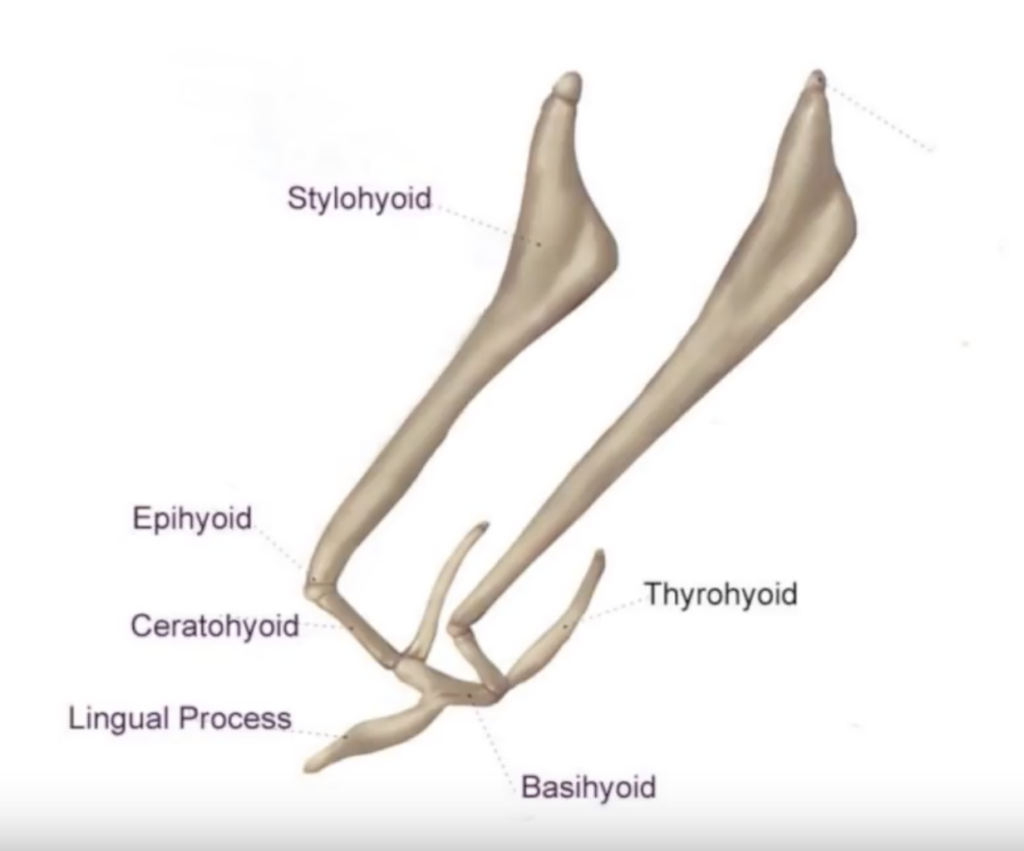
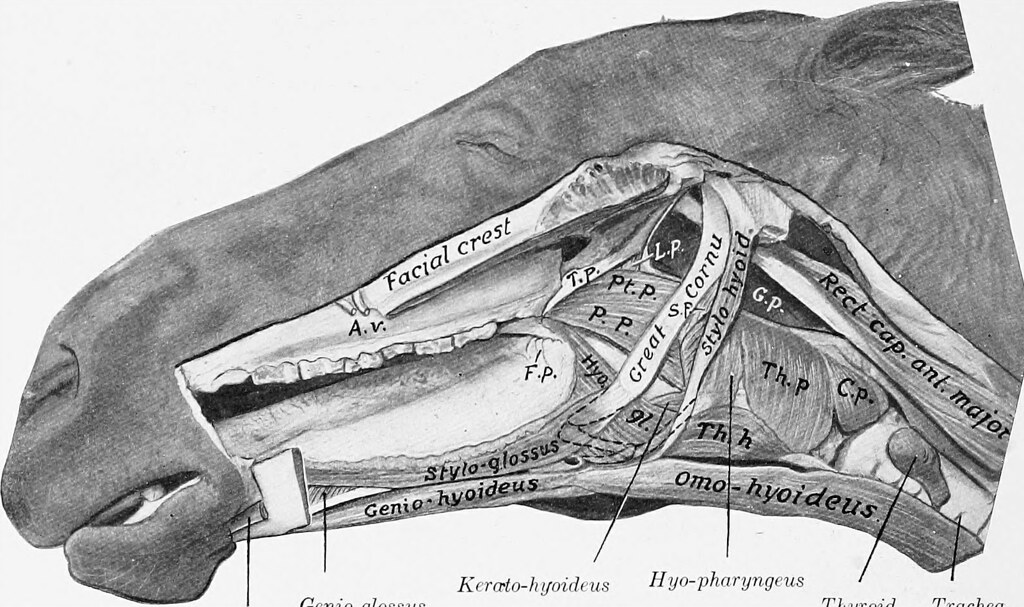

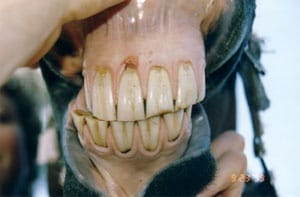
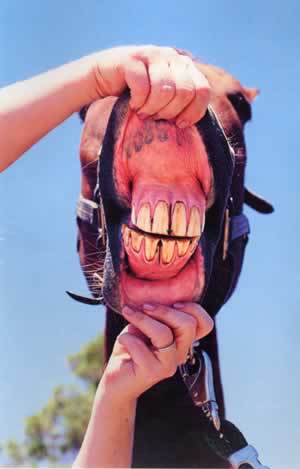
Comments are closed